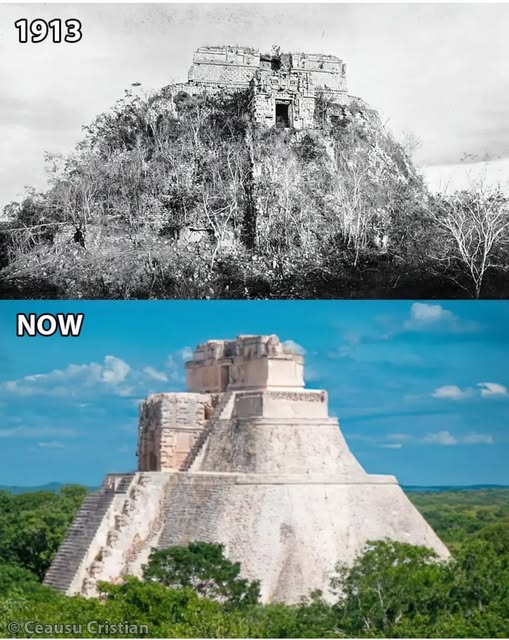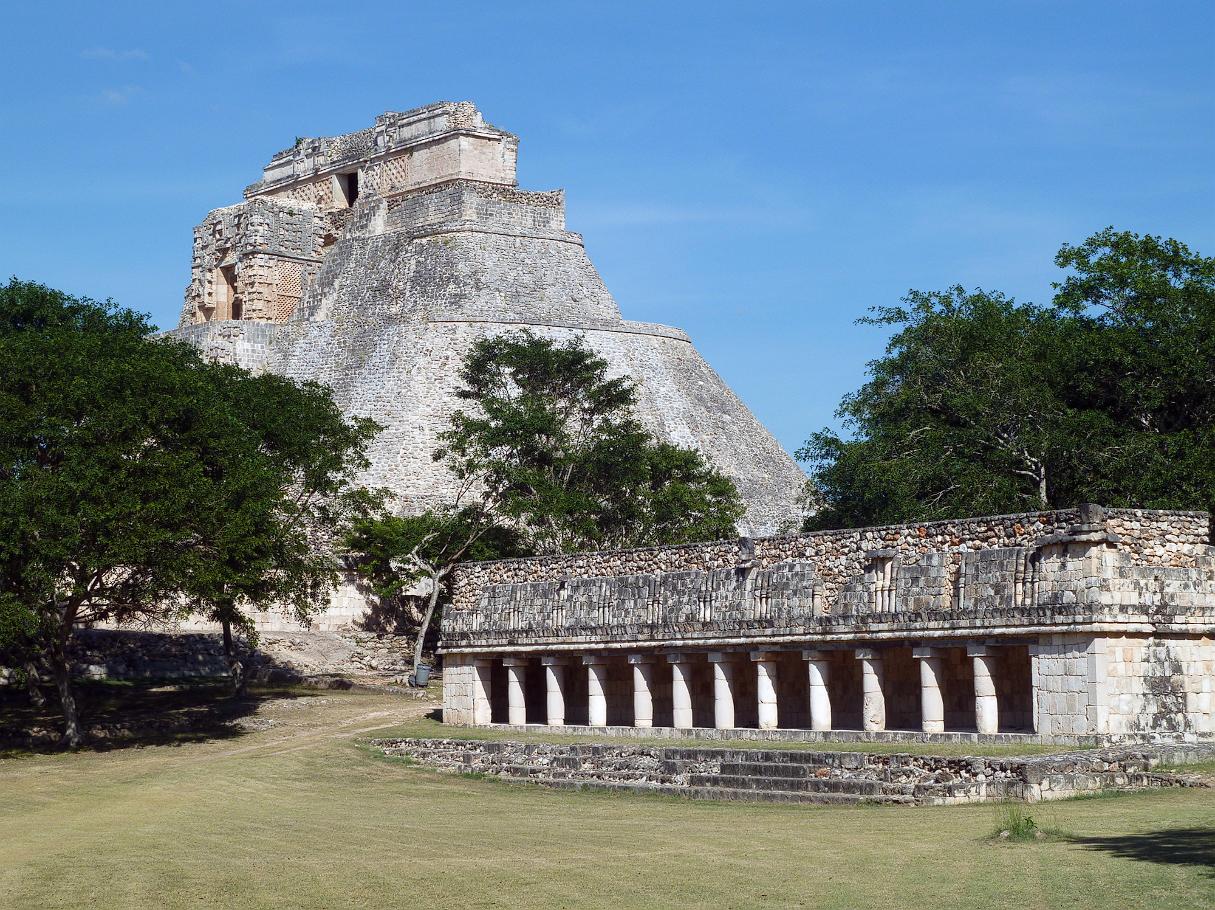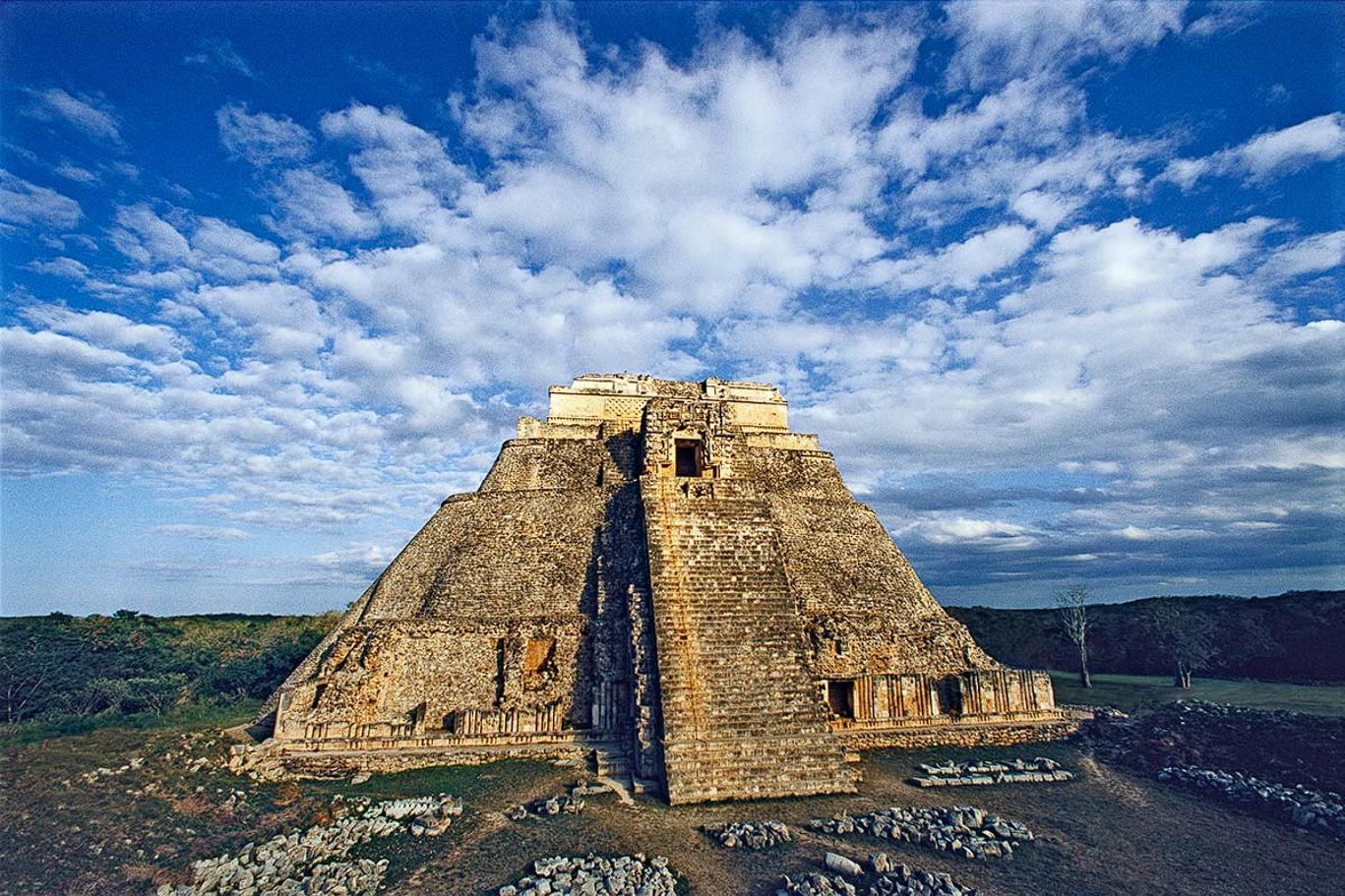The Pyramid of the Magician, a breathtaking structure located in the ancient Maya city of Uxmal, stands as a testament to the remarkable engineering skills and profound spiritual beliefs of the Maya civilization. Its unique elliptical base, steep staircases, and dedication to the rain god Chac make it a captivating landmark that continues to intrigue and inspire visitors from around the world.
Unveiling the Architectural Grandeur of the Pyramid of the Magician
The Pyramid of the Magician is a masterpiece of Maya architecture, showcasing innovative design and intricate construction techniques.
Unique Elliptical Base
The pyramid’s unique elliptical base sets it apart from other Mesoamerican structures, demonstrating the Maya’s advanced understanding of geometry and architectural design.

- Innovative Design:
- The elliptical base represents a significant departure from the more common square or rectangular bases found in other pyramids, showcasing the Maya’s innovative approach to architecture. This design choice highlights their willingness to experiment with form and function, creating a structure that is both visually stunning and structurally sound.
- It was an innovative design.
- Geometric Understanding:
- The precise construction of the elliptical base required a deep understanding of geometry and surveying, highlighting the Maya’s sophisticated mathematical knowledge. The ability to accurately measure and construct such a complex shape demonstrates their advanced understanding of spatial relationships and their ability to apply this knowledge to large-scale construction projects.
- It required geometric understanding.
- Structural Stability:
- The elliptical shape may have been chosen to provide greater structural stability, particularly in the region’s challenging climate and seismic activity. By distributing the weight of the pyramid more evenly, the elliptical base may have helped to prevent structural damage and ensure the longevity of the structure.
- It provided structural stability.
Steep Staircases
The pyramid’s steep staircases, leading to the temple at its summit, are a testament to the Maya’s engineering prowess and their ability to create monumental structures.

- Engineering Prowess:
- The construction of the steep staircases required meticulous planning and execution, showcasing the Maya’s advanced engineering skills and their ability to overcome challenging terrain. The precise alignment and construction of the staircases demonstrate their mastery of stone masonry and their ability to create durable and functional structures.
- It showed engineering prowess.
- Monumental Access:
- The staircases provided monumental access to the temple at the summit, emphasizing the pyramid’s role as a sacred space and a focal point for religious ceremonies. The imposing nature of the staircases would have added to the sense of awe and reverence experienced by those ascending to the temple.
- It provided monumental access.
- Symbolic Ascent:
- The arduous climb up the steep staircases may have been intended to symbolize a spiritual ascent, requiring worshippers to exert physical effort as part of their devotional practice. The physical challenge of the climb would have been seen as a way to purify the body and prepare the soul for communion with the gods.
- It was a symbolic ascent.
Dedication to Chac
Dedicated to the rain god Chac, the pyramid reflects the Maya’s deep spiritual connection to nature and their reliance on agriculture for survival.
- Spiritual Connection:
- The dedication to Chac highlights the Maya’s profound spiritual connection to nature and their reverence for the forces that sustained their agricultural society. Chac, as the god of rain, was essential to the Maya’s survival, and the pyramid’s dedication to him underscores the importance of rain and fertility in their worldview.
- It showed spiritual connection.
- Agricultural Reliance:
- As a civilization heavily reliant on agriculture, the Maya placed great importance on rain and fertility, making Chac a central figure in their pantheon of deities. The pyramid’s dedication to Chac reflects the Maya’s understanding of their dependence on the natural world and their efforts to maintain a harmonious relationship with it.
- It highlighted agricultural reliance.
- Religious Ceremonies:
- The pyramid likely served as a site for religious ceremonies and rituals dedicated to Chac, where prayers and offerings were made to ensure abundant rainfall and bountiful harvests. These ceremonies would have been an integral part of Maya life, reflecting their deep spiritual beliefs and their efforts to secure the blessings of the gods.
- It was used for religious ceremonies.
Conservation and Preservation Efforts
Ongoing conservation and preservation efforts have played a crucial role in maintaining the Pyramid of the Magician’s historical integrity and ensuring its longevity.
Restoration Efforts
Since restoration efforts began in 1913, led by archaeologist Leopoldo Batres, the challenge has been to repair the pyramid while preserving its historical integrity.

- Historical Integrity:
- Preserving the pyramid’s historical integrity requires careful consideration of the original construction techniques and materials, ensuring that restoration work does not compromise its authenticity. Modern conservation methods are employed to minimize the impact of restoration on the original fabric of the structure.
- It needed historical integrity.
- Archaeological Leadership:
- Leopoldo Batres’s leadership in the early restoration efforts set the foundation for future conservation work, emphasizing the importance of archaeological expertise in preserving ancient monuments. His pioneering work helped to establish best practices for the restoration of Maya sites.
- It required archaeological leadership.
- Repair Challenges:
- The repair challenges included addressing structural damage caused by weathering, erosion, and human activity, while also ensuring that the restoration work was compatible with the pyramid’s original design. Careful planning and execution were required to ensure that the restoration work was both effective and respectful of the pyramid’s historical significance.
- It had repair challenges.
Precarious Architecture Stabilization
The challenge has not only been to repair the pyramid but also to stabilize its precarious architecture, ensuring its long-term preservation.
- Long-Term Preservation:
- Stabilizing the pyramid’s precarious architecture is essential for its long-term preservation, protecting it from further damage and ensuring that future generations can appreciate its grandeur. Modern engineering techniques and materials are used to reinforce the structure and prevent further deterioration.
- It focused on long-term preservation.
- Structural Analysis:
- Stabilization efforts require thorough structural analysis to identify weaknesses and develop effective reinforcement strategies, ensuring that the pyramid remains stable for centuries to come. This involves the use of advanced technologies and expertise to assess the structural integrity of the pyramid and develop appropriate solutions.
- It required structural analysis.
- Conservation Techniques:
- Modern conservation techniques, such as the use of non-invasive materials and methods, are employed to minimize damage to the pyramid’s original fabric while ensuring its structural integrity. This includes the use of reversible materials and techniques that can be easily removed or modified in the future.
- It required conservation techniques.
Ongoing Conservation Work
Unlike many ancient sites that fade into obscurity, ongoing conservation work ensures that this remarkable landmark remains a living testament to Maya heritage.
- Maya Heritage Testament:
- Ongoing conservation work ensures that the Pyramid of the Magician remains a living testament to Maya heritage, allowing visitors to experience the grandeur and ingenuity of this ancient civilization. This includes regular maintenance, monitoring, and research to ensure the long-term preservation of the site.
- It was a Maya heritage testament.
- Sustainable Tourism:
- Sustainable tourism practices are implemented to minimize the impact of visitors on the pyramid, ensuring that its cultural and historical significance is preserved for future generations. This includes measures such as controlled access, visitor education, and the development of sustainable infrastructure.
- It required sustainable tourism.
- Educational Outreach:
- Educational outreach programs are conducted to raise awareness about the importance of preserving Maya heritage, fostering a sense of stewardship and responsibility among visitors and local communities. This includes the development of educational materials, guided tours, and community engagement initiatives.
- It required educational outreach.
Captivating Visitors and Scholars
The Pyramid of the Magician continues to captivate visitors and scholars, drawing them to Uxmal to uncover its secrets and marvel at its grandeur.
Tourist Attraction
It continues to captivate travelers, drawing them to Uxmal to experience the awe-inspiring architecture and rich history of the Maya civilization.
- Awe-Inspiring Architecture:
- The pyramid’s awe-inspiring architecture, with its unique elliptical base and steep staircases, attracts tourists from around the world, making it a must-see destination for travelers interested in ancient civilizations. The visual impact of the pyramid is truly remarkable, and it leaves a lasting impression on visitors.

CÁC TIN KHÁC
Mary Walton: The Forgotten Inventor Who Helped Clean Up America’s Cities
Tomb of Queen Nefertari in the Valley of the Queens, Egypt
Discover the Hypostyle Hall of the Temple of Hathor at Dendera
Venus de Losange: Unveiling the Mystery of a 20,000-Year-Old Paleolithic Icon